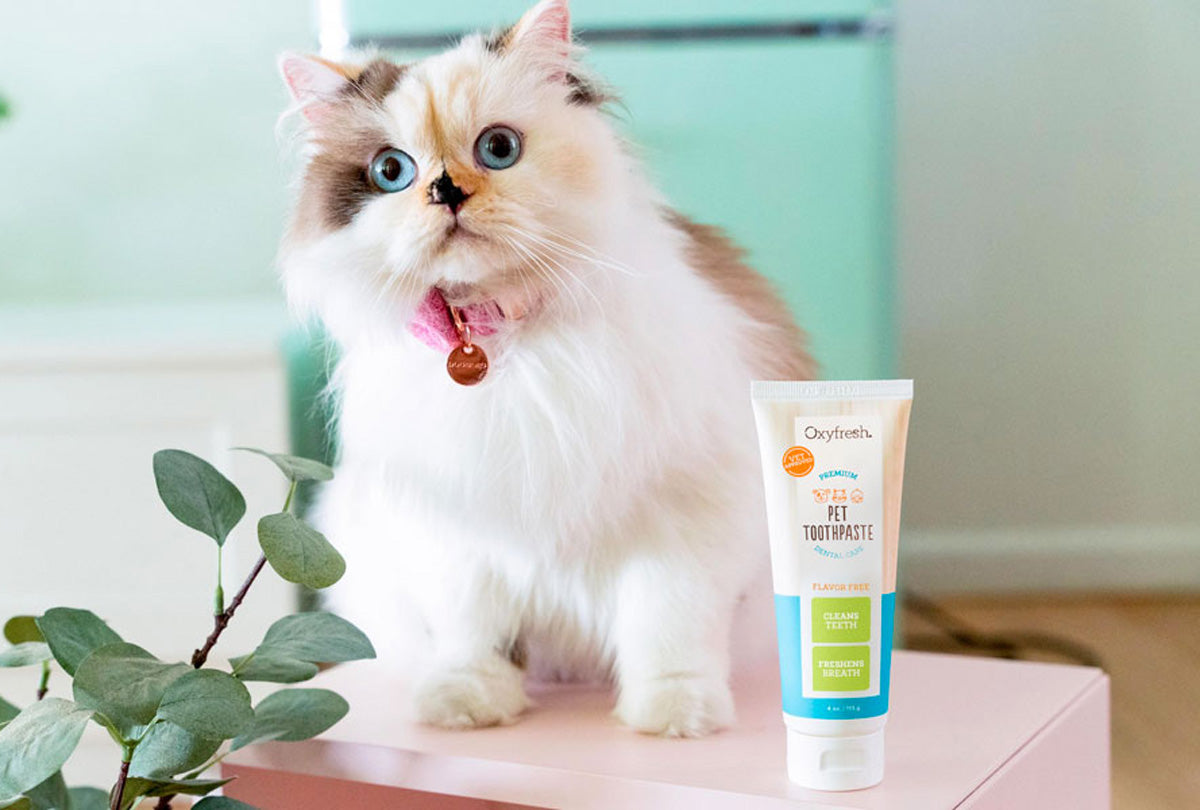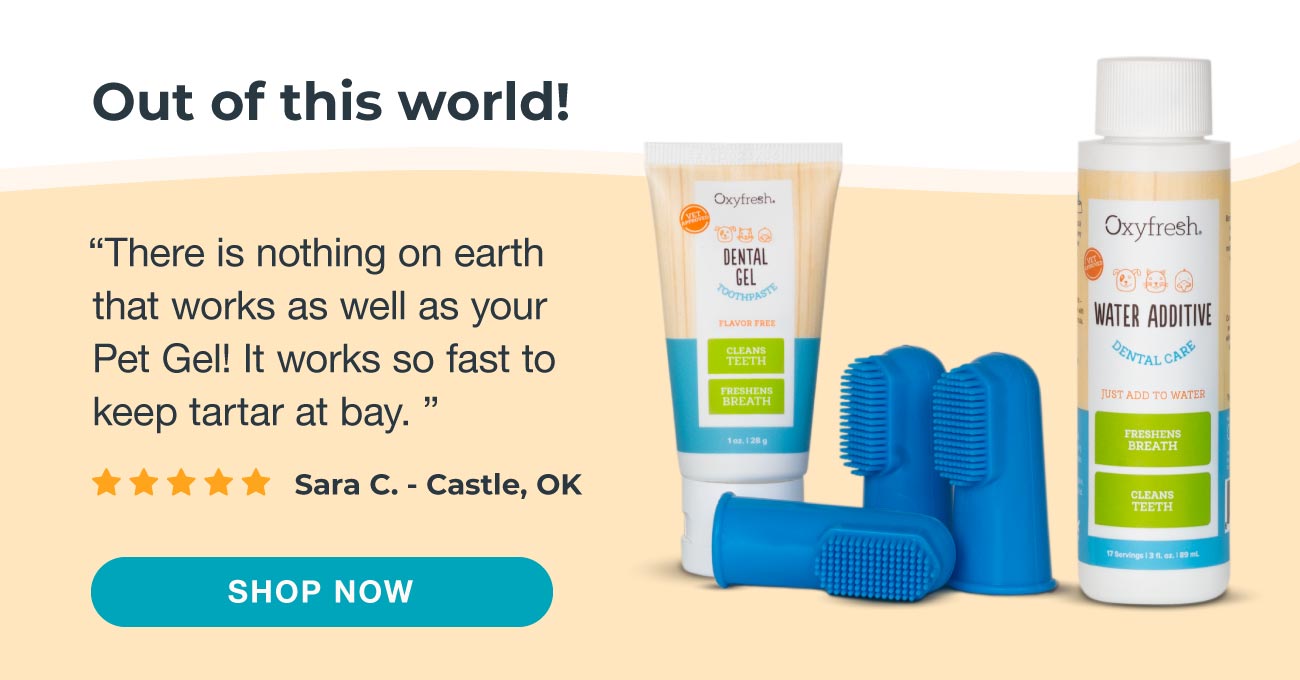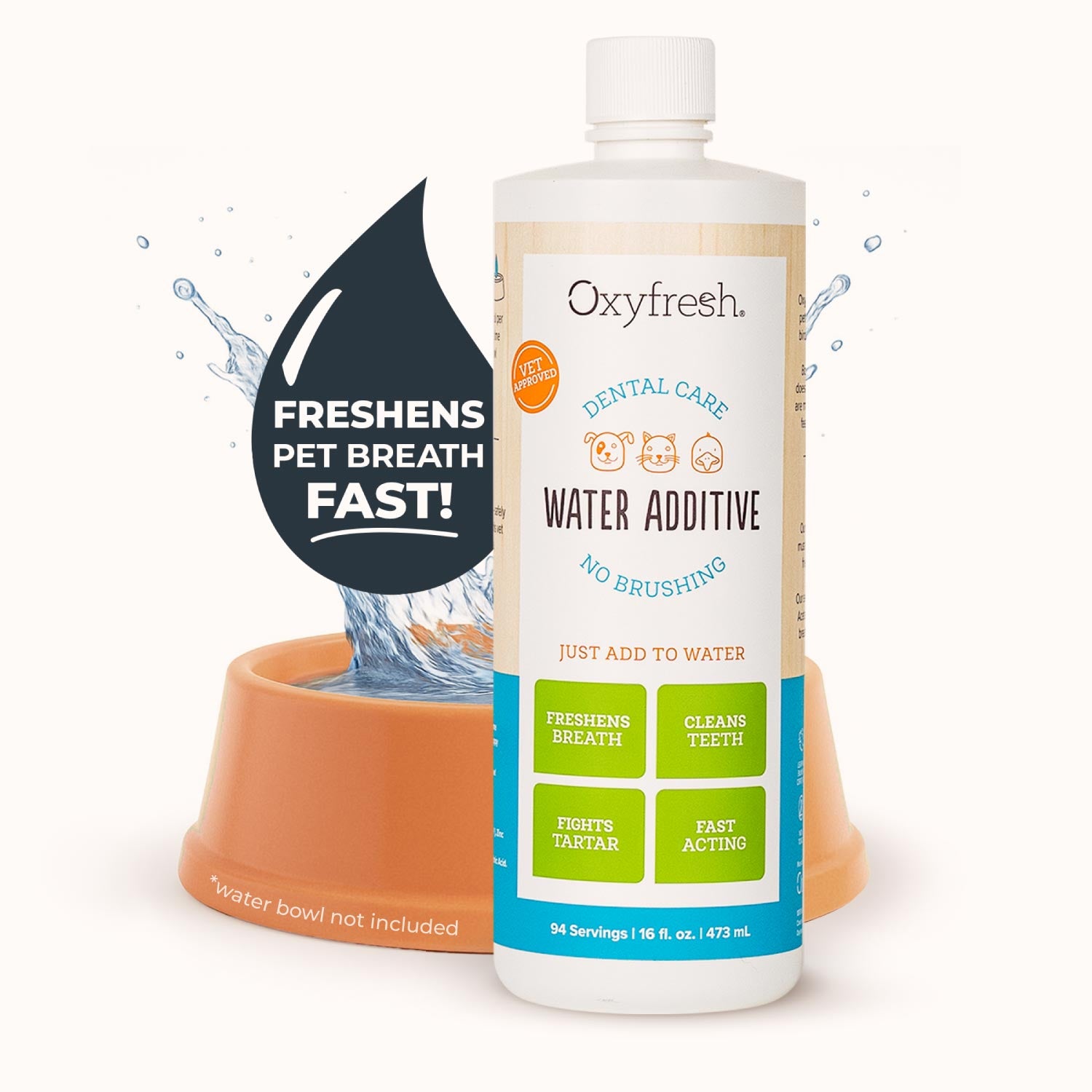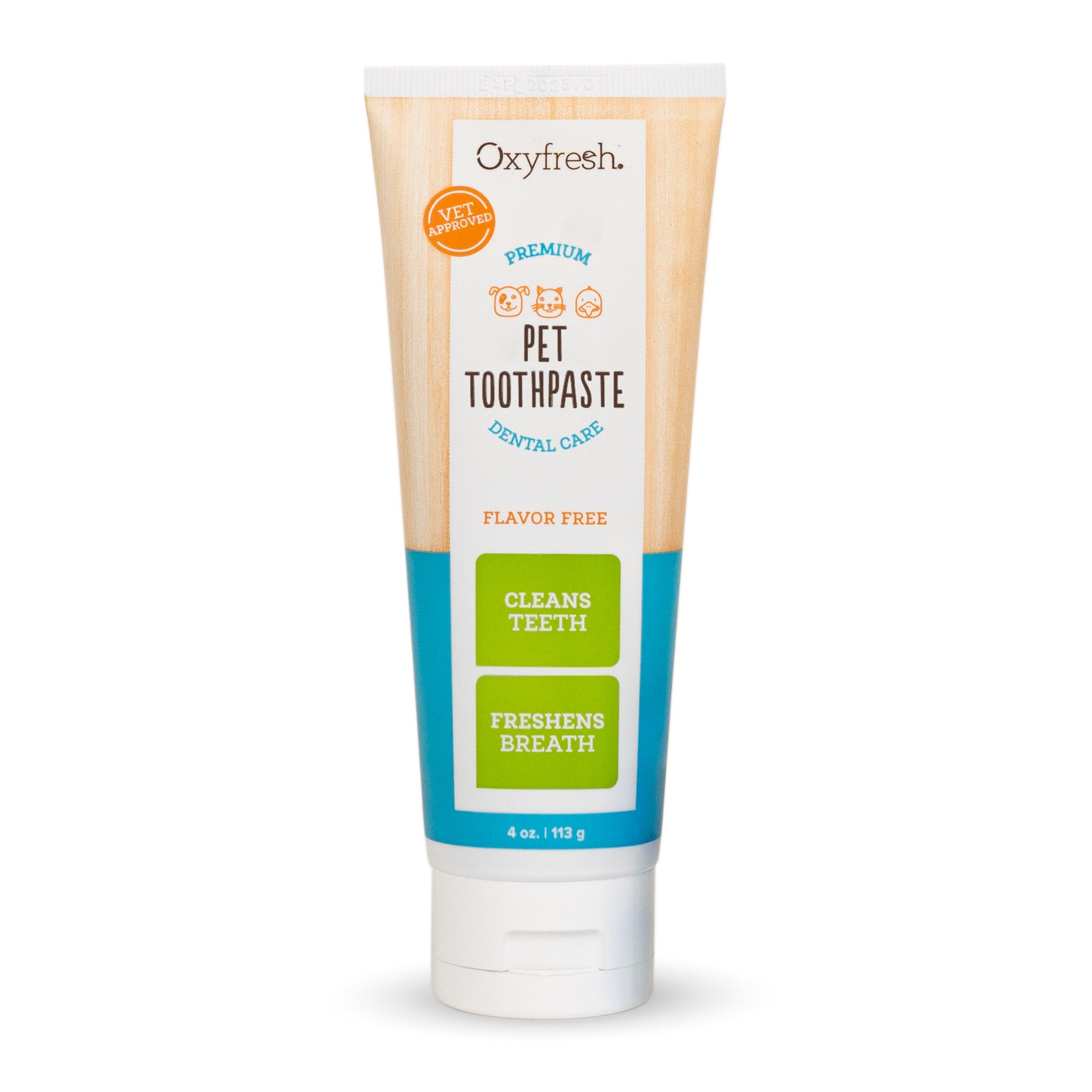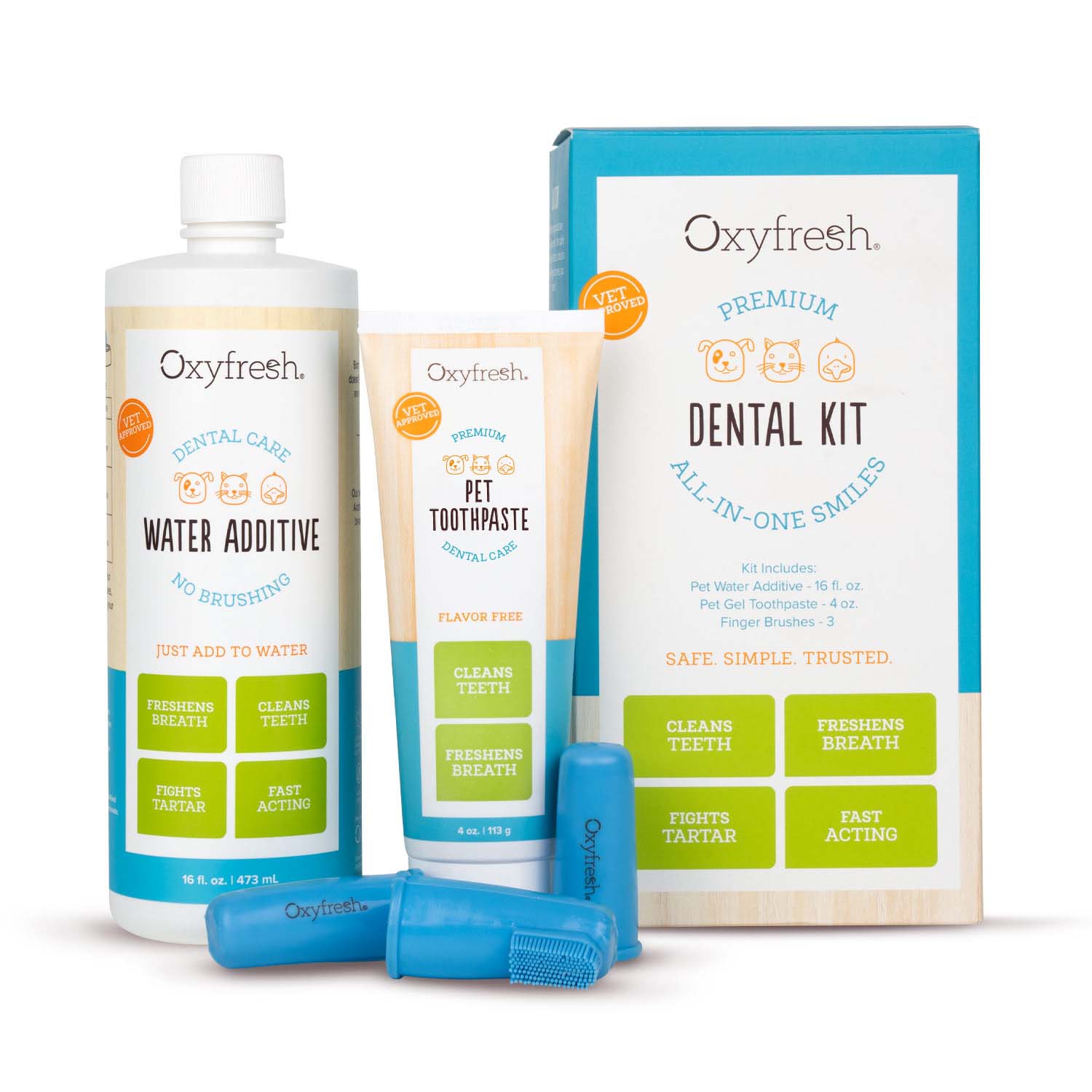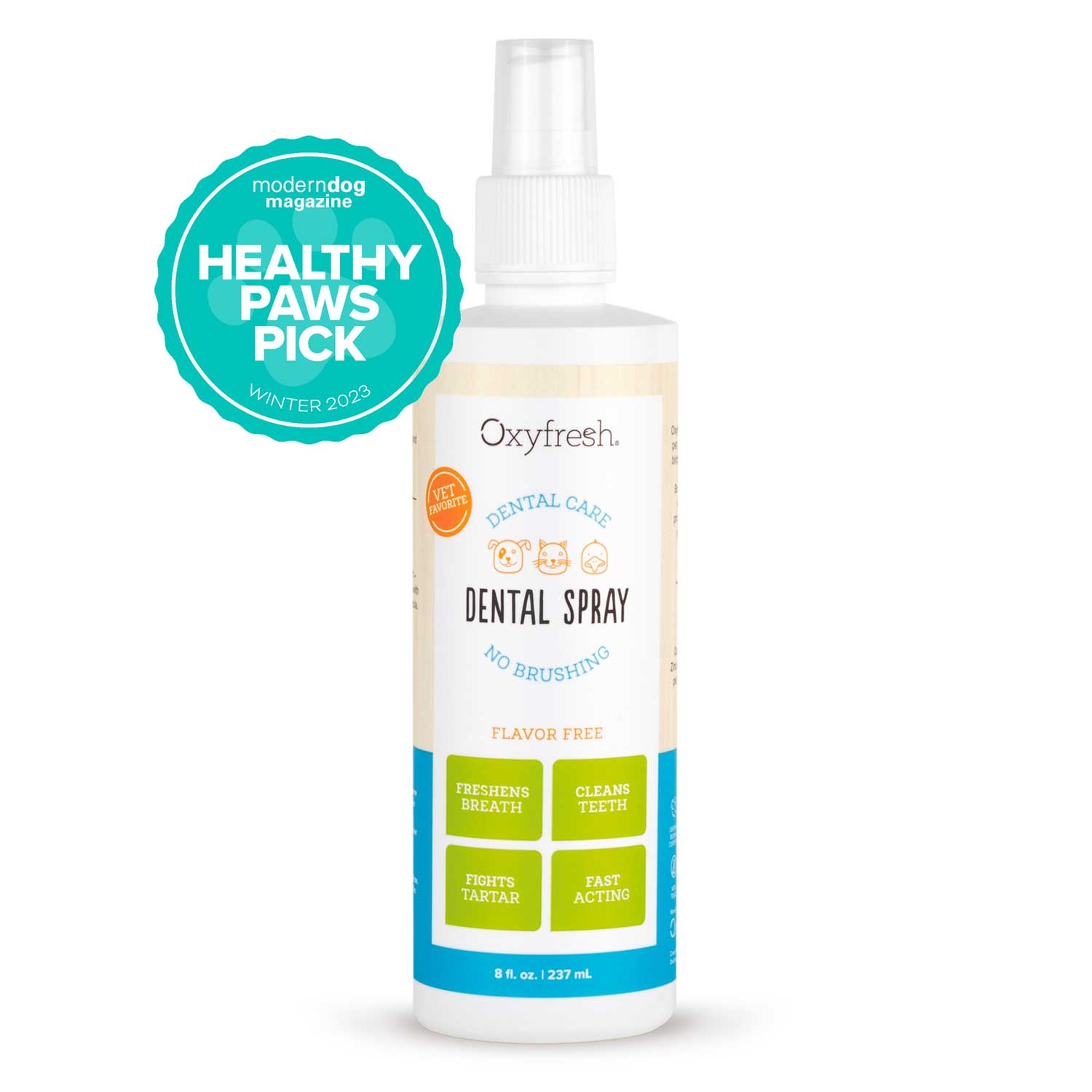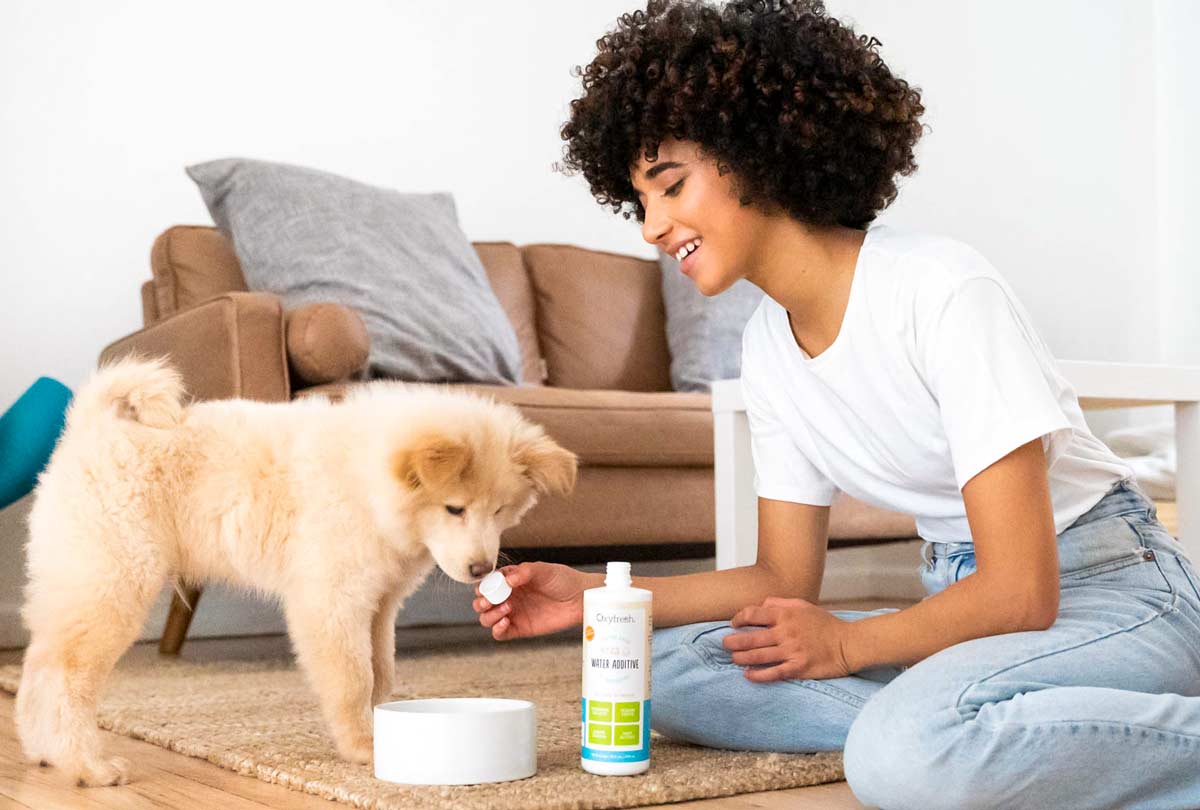If you’re new to the world of cat teeth cleaning, it can seem a bit overwhelming at first. But don’t worry – with a little practice and patience, you’ll be a pro in no time! Plus, you can feel good knowing it’s one of the best things you can do to protect your cat’s smile and overall health.
Like any task, it’s important to start with the right supplies. This can be the difference between a happy bonding experience and a fur-flying fiasco! So keep reading for everything you need to know about cat teeth cleaning and choosing a cat toothpaste.
Why Cat Teeth Cleaning Is Important
Cat teeth cleaning, along with yearly checkups at the vet, can go a long way in keeping your cat happy and healthy. In fact, it could even add YEARS to your cat’s life.
That’s because cat teeth cleaning removes plaque buildup. Plaque left to sit on the teeth will eventually harden into tartar, which can get underneath the gum line, leading to periodontal disease (advanced gum disease).
Tartar is easy to spot. Unlike plaque, which is a sticky clear film, tartar is hard and yellow-brown in color. It’s normally found at the edge of the gum line, especially on the back teeth (premolars and molars).
In serious cases, bacteria from a gum infection can work their way into a cat’s bloodstream, causing harm to the vital organs, like the heart, liver and kidneys. That’s why regular cat teeth cleaning really can add years to your cat’s life!
Is your cat showing these signs of gum disease?
- Stinky breath
- Excessive drooling
- Pawing at the mouth
- Red or swollen gums
- Tartar buildup on teeth
- Not wanting to be pet around the mouth
- Change in eating habits (not wanting to eat, chewing on one side of the mouth, dropping food)
If your cat displays any of these signs of gum disease, try not to stress. First, know that you're not alone. It's estimated that 7 in 10 cats have some form of gum disease by age 3. Second, it's never too late to partner with your vet to give your cat a healthier smile. And here's the really good news: the early stages of feline gum disease are 100% reversible when you adopt good oral health habits.
What to Look for in a Cat Toothpaste
Rule #1: make sure you choose a toothpaste formulated specifically for pets. Human toothpaste should never be used on cats, even in small amounts. Ingredients like fluoride can cause stomach upset. Xylitol, a natural sweetener that’s safe for humans, can be toxic to cats. Because cats can’t spit and rinse, anything that’s in their toothpaste will be swallowed.
Like all products, quality matters when choosing a cat toothpaste. You’ll want to make sure it has an ingredient that will actually target bacteria in your cat’s mouth. Neutralizing plaque- and bad breath-causing bacteria is the secret to keeping cats' smiles healthy and decreasing their risk of gum disease.
To take on this bacteria (and win!), look for an enzymatic toothpaste formula or a toothpaste with chlorine dioxide. And, of course, it’s always smart to ask your cat’s veterinarian about the dental products they recommend.
Ingredients to avoid in cat toothpaste:
- Baking soda: This fave kitchen staple does NOT taste good, which can cause problems with cat teeth cleaning. It also has a high alkaline content, which is a no-go for felines’ finicky stomachs.
- SLS: A common detergent in human toothpaste is sodium lauryl sulfate (SLS). It’s in there to help with the foaming and spreading action of the toothpaste. Steer clear of it in cat toothpastes though, as it can cause indigestion.
- Alcohol: Alcohol is known to be a germ killer, but it can also sting and cause dryness in the mouth, which can, ironically, make bad breath and plaque buildup worse for cats.
Flavor vs. No Flavor: What's Better for Cat Toothpaste?
There are many flavors of cat toothpaste, from poultry to seafood to mint, malt and who knows what else! For some cat parents, this makes brushing easier. For others who have picky cats, this can create an expensive trial-and-error situation, as they try to find a flavor their cats will tolerate. Additionally, if you’re brushing with a seafood-flavored paste, it doesn’t exactly do wonders for their breath in the short-term. Lastly, for cat parents who try to steer clear of artificial ingredients, it’s a bit of a mystery as to what the word "flavor" on a label actually means. If you share any of the same concerns, a flavor-free cat toothpaste is definitely the route to go for peace of mind (and seafood-free breath).
Best Flavor Free Toothpaste for Cats
Oxyfresh vet-recommended Pet Dental Gel Toothpaste is specially formulated to remove plaque, condition the gums, and keep those cat kisses fresh! Our secret to healthy pet smiles is Oxygene®, our propriety, non-toxic blend of stabilized chlorine dioxide that actively seeks out the bacteria that cause plaque, tartar and bad breath. No other cat toothpaste has it! And because it’s free of scents and flavors, it makes brushing easy-peasy. Just apply to a finger toothbrush or you can even rub it along your cat’s gum line with your finger and let their tongue do the rest. Try it and we're confident you (and your cat) will love it!
Cat Toothbrushing in 5 Easy Steps
Now that you’re in-the-know about cat toothpastes, now comes the fun(ish) part ... actually brushing your sweet furball’s teeth. Again, don’t worry. It takes patience and time, but you’ll get the hang of it.
#1. Purchase a Toothbrush & Toothpaste for Cats
In addition to a cat toothpaste, you’ll want to make sure you have a toothbrush for your cat. Traditional pet toothbrushes can oftentimes be too bulky for a cat’s small mouth. The solution is to get a finger brush. Just as the name suggests, a finger toothbrush slips on right over your finger to make brushing your cat’s teeth more comfy and convenient.
#2. Prep
In the weeks leading up to brushing, get your cat used to your finger being in his or her mouth. Dab your finger in your cat’s favorite liquid treat (e.g. tuna juice) and then rub your finger along the teeth and gums.
#3. Get in Position
Cat toothbrushing is easiest if your cat is facing away from you. (Less chance of the cat bolting!) Hold your cat and gently tilt your cat’s head as you pull up the top lip to access the teeth.
#4. Brush
Brush your cat’s teeth along the gum line using slow, gentle, circular strokes. Just focus on the outside part of the teeth since this is where plaque and tartar tend to accumulate. Calmly praise your cat as you brush and stop if your cat shows signs of anxiety. Ideally, you’ll want to work up to 30 seconds per side. But when you’re first starting out, your cat may only tolerate brushing for a few seconds. That’s OK. You can work your way up as your cat adjusts.
#5. Treat
Give a treat after cat toothbrushing, even if it didn’t go well. This will help your cat build a positive association with brushing.
Cat Toothbrushing: How Often to Do It
To best protect your cat from plaque and tartar buildup, it’s best to brush at a minimum three times a week. If you can work your way up to daily brushing, this is the ideal situation. Just like with us humans, if we skip a day of brushing, we can have not-so-pleasant breath and teeth that are sticky with plaque.
In addition to toothbrushing, you’ll want to make sure your cat gets regular dental checkups. If there’s a lot of tartar buildup on your cat’s teeth, a professional cleaning under anesthesia will likely be necessary. (Yet another reason to brush ... saving money at the vet!)
Can you substitute dental treats for toothbrushing?
Browse the pet aisle and you’re bound to see lots of treats and chews that promise to remove plaque from cats’ teeth. The mechanical chewing motion of gnawing on a treat will naturally help remove a little plaque and bacteria, but some treats have a lot of fillers and carbs and can actually contribute to plaque production.
One of the things you can do is to look for the Veterinary Oral Health Council seal to make sure the claim of removing plaque is true. Regardless, treats and chews should never take the place of toothbrushing. Instead, use them as a supplement.
What If My Cat Hates Toothbrushing?
If you give it a go and toothbrushing just doesn’t work out, the next best thing is to use a water additive. It just goes straight into the cat’s water each day for a no-brush, no-fuss routine. Just make sure the water additive you choose doesn’t contain flavors, otherwise your cat may not drink their water. Not sure where to start? How 'bout here with this 2022 Healthy Paws Pick: Oxyfresh Pet Dental Water Additive. It’s free of flavors, scents and dyes and fights plaque with every drink. Even the pickiest cats love it!
Cat Teeth Cleaning: A Smart Next Step
Every cat is unique, so when you’re just starting down the road of cat teeth cleaning, it pays to be prepared. If you’re not sure if you and your cat will prefer toothbrushing, a water additive (or ideally both), why not try it all?
Oxyfresh mini Pet Dental Kit is the perfect solution. It features mini sizes of our flavor-free Pet Dental Gel Toothpaste & Pet Dental Water Additive plus 3 reusable soft silicone finger toothbrushes. It’s the complete package for a completely clean and fresh cat smile.

